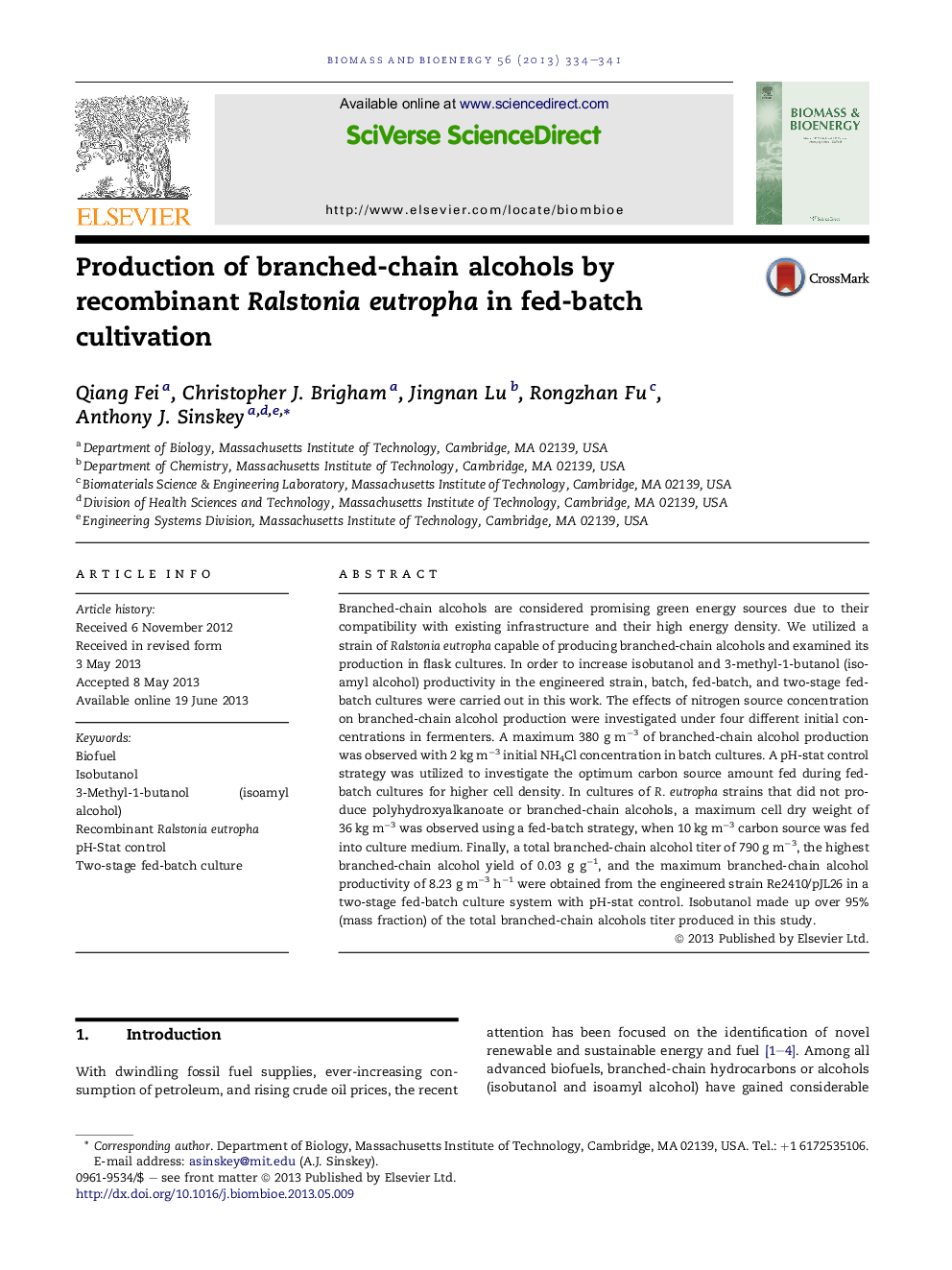| Article ID | Journal | Published Year | Pages | File Type |
|---|---|---|---|---|
| 7065175 | Biomass and Bioenergy | 2013 | 8 Pages |
Abstract
Branched-chain alcohols are considered promising green energy sources due to their compatibility with existing infrastructure and their high energy density. We utilized a strain of Ralstonia eutropha capable of producing branched-chain alcohols and examined its production in flask cultures. In order to increase isobutanol and 3-methyl-1-butanol (isoamyl alcohol) productivity in the engineered strain, batch, fed-batch, and two-stage fed-batch cultures were carried out in this work. The effects of nitrogen source concentration on branched-chain alcohol production were investigated under four different initial concentrations in fermenters. A maximum 380 g mâ3 of branched-chain alcohol production was observed with 2 kg mâ3 initial NH4Cl concentration in batch cultures. A pH-stat control strategy was utilized to investigate the optimum carbon source amount fed during fed-batch cultures for higher cell density. In cultures of R. eutropha strains that did not produce polyhydroxyalkanoate or branched-chain alcohols, a maximum cell dry weight of 36 kg mâ3 was observed using a fed-batch strategy, when 10 kg mâ3 carbon source was fed into culture medium. Finally, a total branched-chain alcohol titer of 790 g mâ3, the highest branched-chain alcohol yield of 0.03 g gâ1, and the maximum branched-chain alcohol productivity of 8.23 g mâ3 hâ1 were obtained from the engineered strain Re2410/pJL26 in a two-stage fed-batch culture system with pH-stat control. Isobutanol made up over 95% (mass fraction) of the total branched-chain alcohols titer produced in this study.
Keywords
Related Topics
Physical Sciences and Engineering
Chemical Engineering
Process Chemistry and Technology
Authors
Qiang Fei, Christopher J. Brigham, Jingnan Lu, Rongzhan Fu, Anthony J. Sinskey,
